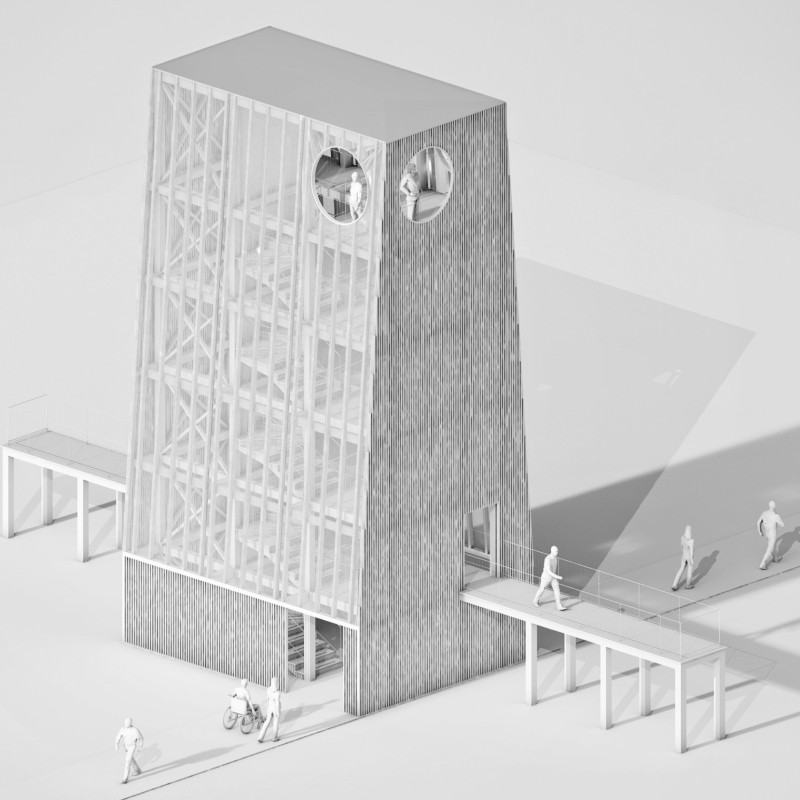5 key facts about this project
At its core, the project serves multiple functions, likely addressing both residential and communal needs, reflective of contemporary living trends that favor multipurpose spaces. Each area within the structure is meticulously designed to promote interaction and community engagement while ensuring privacy and comfort. The layout is intuitive, guiding occupants through a series of spaces that transition smoothly from public to private, fostering a sense of belonging and ease.
The architectural design incorporates diverse materials, contributing to both the structural integrity and visual character of the project. The prominent use of concrete, steel, glass, and sustainably sourced wood underlines a commitment to durability while enhancing the building's aesthetic appeal. Concrete elements form the backbone of the structure, providing strength and stark beauty, while glass facades create transparency, blurring the line between interior and exterior spaces. This thoughtful use of materials not only emphasizes modern architectural trends but also underscores an eco-friendly ethos, featuring sustainable wood sourced from responsibly managed forests.
One of the unique aspects of this architectural design is its consideration of the surrounding environment. The project pays homage to local architectural styles, drawing inspiration from traditional forms while reinterpreting them through a modern lens. This contextual awareness ensures that the building feels like an integral part of the community rather than an imposition on the landscape. Additionally, the strategic placement of windows and the inclusion of green roofs contribute to energy efficiency, harnessing natural light and promoting biodiversity.
Landscaping plays a pivotal role in the overall design strategy. Outdoor spaces are thoughtfully arranged to extend the functionality of the building while providing recreational areas for users. The incorporation of native plants supports local ecology and minimizes water usage, aligning with sustainability goals. Pathways and seating areas invite people to engage with the space, reinforcing the project's communal focus.
In terms of architectural plans and sections, the rigor in design is evident. The plans display a harmonious arrangement of spaces, with careful attention to scale and proportion. Architectural sections reveal the intricate layering of materials and the thoughtful interplay between light and shadow within the building. The rooflines are sculpted to interact with the skyline, further enhancing the architectural narrative.
As visitors explore the project presentation, they will gain deeper insights into the architectural ideas that informed each decision. The attention to detail in both craftsmanship and design choices reflects a thorough understanding of contemporary demands while remaining respectful of the historical and cultural context.
For those interested in architectural innovations, photographic depictions, and technical drawings, examining the architectural plans and sections will provide a richer understanding of how this project achieves its goals. Engaging with the various elements will illustrate the project’s commitment to thoughtful design and community integration, revealing a comprehensive approach to modern architecture. This architectural endeavor stands as a testament to the potential of design to enrich lives and enhance environments in which we live and work.


























